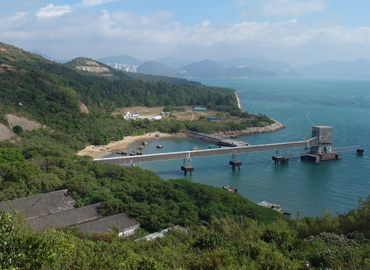 In 2005, Hong Kong Electric and The Conservancy Association jointly formulated Green Hong Kong Green (GHKG) project. By developing eco-heritage routes on Hong Kong and Lamma, GHKG project is contributed to biophysical environment and heritage conservation of this island.
In 2005, Hong Kong Electric and The Conservancy Association jointly formulated Green Hong Kong Green (GHKG) project. By developing eco-heritage routes on Hong Kong and Lamma, GHKG project is contributed to biophysical environment and heritage conservation of this island.
Visitors can join the eco-tours irregularly organized by The Conservancy Association or self-experience with the information available at GHKG project website so as to understand more the eco-system, natural resources, culture and history of Lamma.
Route One: Yung Shue Wan Ferry Pier (Starting point) > Yung Shue Wan Tin Hau Temple > Hung Shing Yeh Beach > Tree Planting Site Pavilion > Lo So Shing School > Sok Kwu Wan Tin Hau Temple > Sok Kwu Wan Ferry Pier (End point)
Route Two: Yung Shue Wan Ferry Pier (Starting point) > Po Wah Yuen > Tai Peng Village > Pak Kok Tree Planting Site > Tai Ling Village > Lamma Winds > Yung Shue Wan Street/ Tai Wan To > Yung Shue Wan Ferry Pier (End point)
Route Three: Sok Kwu Wan Ferry Pier (Starting point) > Sok Kwu Wan Tin Hau Temple > Balcony Rock > Tung O > Shek Pai Wan Beach > Yung Shue Ha > Mo Tat Old Village > Lamma Island Family Walk > Sok Kwu Wan Ferry Pier (End point)
Route Four: Yung Shue Wan Ferry Pier (Starting point) > Tai Peng Village > Pak Kok Sun Tsuen > Pak Kok Kau Tsuen > Nga Kau Wan > O Tsai > Yung Shue Wan Ferry Pier (End point)

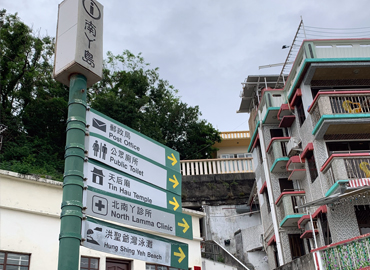
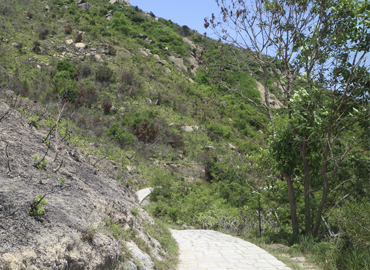
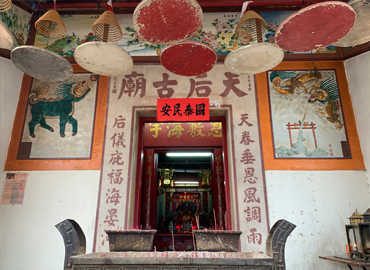 Dedicated to the Queen of Heaven and the goddess of the sea, the 100-year-old temple is guarded by a pair of stone lions. Inside, behind a red spirit stand (to deflect evil spirits), is the main shrine with images of the beaded and veiled Tin Hau. This temple serves as the main temple for the people living in the north section of Lamma.
Dedicated to the Queen of Heaven and the goddess of the sea, the 100-year-old temple is guarded by a pair of stone lions. Inside, behind a red spirit stand (to deflect evil spirits), is the main shrine with images of the beaded and veiled Tin Hau. This temple serves as the main temple for the people living in the north section of Lamma.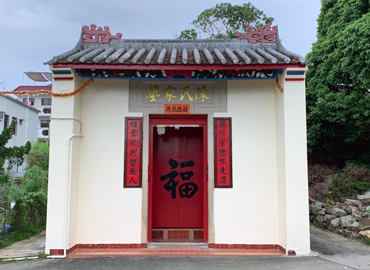 In Tai Wan Village at the northern section of Lamma, there is an old-style family school of Chan ‘s Family. It was built in 1921. Besides its school function, it was also the place for worshiping Chan’s ancestors. Tai Wan is the only village with family temple in Lamma.
In Tai Wan Village at the northern section of Lamma, there is an old-style family school of Chan ‘s Family. It was built in 1921. Besides its school function, it was also the place for worshiping Chan’s ancestors. Tai Wan is the only village with family temple in Lamma.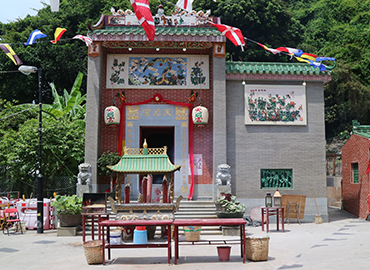 This temple is the main temple for people who live in the southern section of Lamma. It has a history over 170 years.
This temple is the main temple for people who live in the southern section of Lamma. It has a history over 170 years.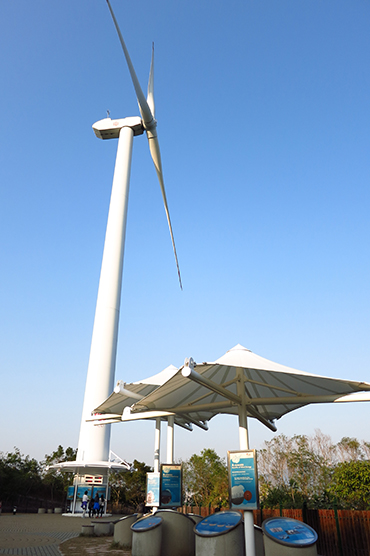 To promote the renewable energy to the public, Hongkong Electric Company, Limited (HEC) built the first commercial-scale wind turbin, Lamma Winds on Lamma Island. By using western technology on wind power, electricity will be generated upon reaching a certain wind speed and feeding into HECs’ network. Green energy reduce emission of CO2 and contribute to environmental protection. Lamma Winds opens to the public. The exhibitions thereat introduce the information and application of renewable energy. An energy meter installed provide real-time data including wind speed and electricity generated by Lamma Winds. Meanwhile, visitors enjoy the beautiful scene of Hong Kong Island South and Lamma Island at the lookout pavilion nearby.
To promote the renewable energy to the public, Hongkong Electric Company, Limited (HEC) built the first commercial-scale wind turbin, Lamma Winds on Lamma Island. By using western technology on wind power, electricity will be generated upon reaching a certain wind speed and feeding into HECs’ network. Green energy reduce emission of CO2 and contribute to environmental protection. Lamma Winds opens to the public. The exhibitions thereat introduce the information and application of renewable energy. An energy meter installed provide real-time data including wind speed and electricity generated by Lamma Winds. Meanwhile, visitors enjoy the beautiful scene of Hong Kong Island South and Lamma Island at the lookout pavilion nearby.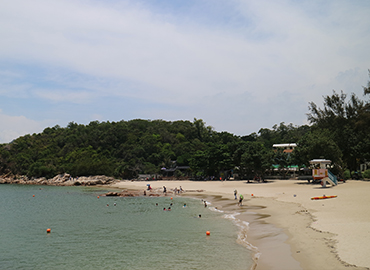 There are two public beaches at Lamma, namely Hung Shing Yeh Beach and Lo So Shing Beach. The former is more popular with western tourist and islander owing to its geographical position. Tourist at Hung Shing Yeh Beach can survey Lamma Power Station on the other side which was built in 1978.
There are two public beaches at Lamma, namely Hung Shing Yeh Beach and Lo So Shing Beach. The former is more popular with western tourist and islander owing to its geographical position. Tourist at Hung Shing Yeh Beach can survey Lamma Power Station on the other side which was built in 1978.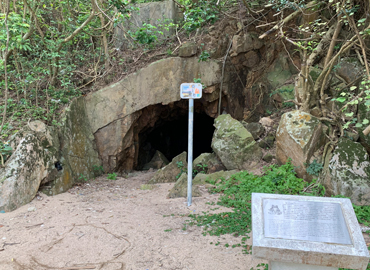 A cave in Lamma preserves its significance during World War II. The historical record indicates the speedboats were hidden by Japan’s Hong Kong-based ‘kamikaze team” at this cave which were later deployed to carry out the suicide missions against Allied shipping.
A cave in Lamma preserves its significance during World War II. The historical record indicates the speedboats were hidden by Japan’s Hong Kong-based ‘kamikaze team” at this cave which were later deployed to carry out the suicide missions against Allied shipping.